The Cat Backpack Carrier Ultimate Guide
*Updated 5/13/25
Getting a cat backpack carrier for your cat can be an adventuring game changer. As someone who put off investing in a cat backpack for a while, I really wish I had gotten one sooner.
I can remember one instance in particular when I wished we had one. My husband and I were on a hike with one of our cats, Caster, and he quickly and unexpectedly decided that he’d had enough. Unfortunately, he decided this when were still a mile from the car. That mile hike back carrying an angry cat felt like it lasted forever! A backpack carrier would have made the situation a lot more pleasant and less stressful for everyone.
In this guide, you can find information on why you should backpack train your cat, how to pick out the right cat backpack, how to train your cat to ride in it, and a list of my favorite backpack carriers — so keep reading!
Interested in an ad-free experience?
Come join the Trailblazers community and get access to ALL KittyCatGO articles with ZERO ads!

*Disclosure: This post contains affiliate links. If you make a purchase using one of these links, I will receive a small commission at no extra cost to you. This helps me to continue creating helpful content. Don’t worry – I would never recommend something I don’t like or use myself!
(Though not absolutely necessary, I think it’s safest for your cat to be harness and leash trained before taking them out adventuring in a backpack. Check out my tips for harness and leash training as well as my cat harness guide for details and guidance.)
Before we get to the backpack training tips, let’s start with WHY it’s worth investing in a cat backpack carrier, as well as what to look for in one…
4 Reasons to Get a Cat Backpack Carrier
If your cat is already harness and leash trained, you may be wondering, “Why do I need a cat backpack carrier?” Well, they are actually an awesome and highly-recommended adventuring accessory for a few reasons…
1. A cat backpack can be a helpful training tool. If you’re just beginning training your cat for adventures, carrying them in a backpack at first will help get them acclimated to new situations. Chances are your cat isn’t going to be ready for a long hike or feel comfortable at your local pet store the first time you go. Introducing your cat to these situations slowly is best, and a backpack carrier allows you to do that. You can find details on how to do this in my article, “Which is Best: A Cat Backpack or Stroller.”
2. They give your cat a “safe place” to retreat to. Even if your cat is an experienced adventurer, you never know what you’re going to encounter when you’re out and about. If your cat gets nervous for some reason or you encounter a potentially dangerous situation, it is wonderful to have that backpack for your cat to escape to. It gives you both peace of mind.
3. They give your cat somewhere to rest. Say you’re on a hike with your cat, and after a mile or two, they get tired. If you have a backpack carrier, you can just put them inside and continue on with your hike.
4. Cat backpacks are versatile! They can be utilized with all types of adventures – vet visits, hiking, biking, canoeing/kayaking, going to the park, visiting the pet store, hanging out at your favorite restaurant/brewery, etc! Many of them also double as air travel carriers, so they can be used for all types of travel.
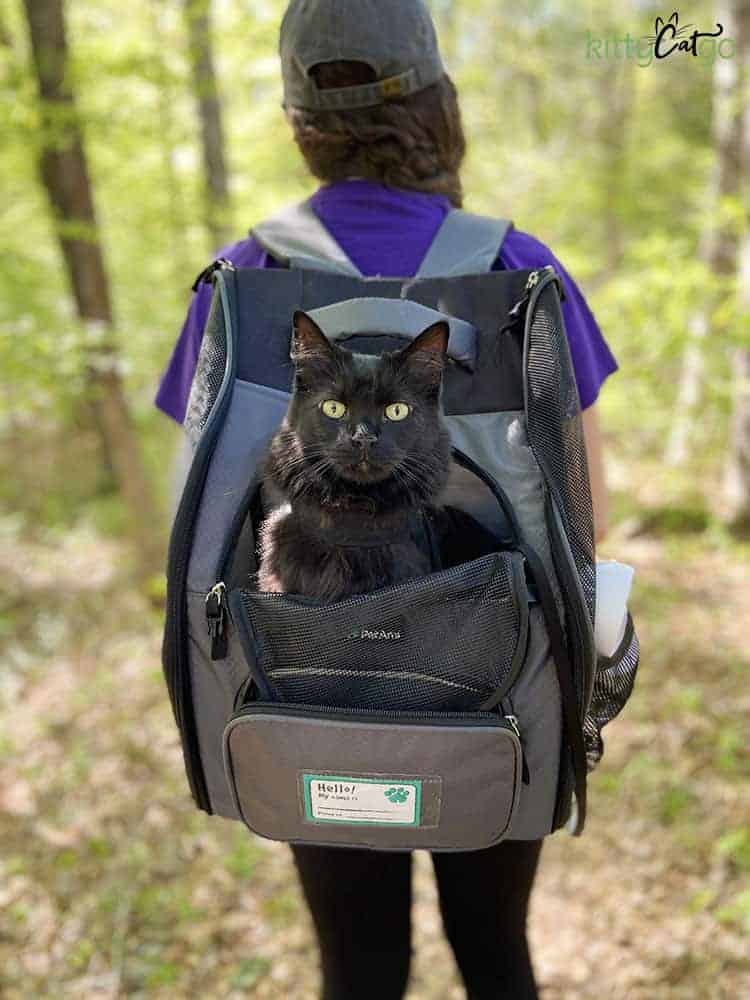
Picking Out the Right Cat Backpack
There are many styles of pet backpacks on the market. Backpacks in all shapes and sizes, backpacks for all different purposes, backpacks that are cute and trendy, and backpacks that are more functional. Finding the one that best suits your needs and is comfortable for both you and your cat is of the upmost importance.
Features to Look For and Things to Consider
- Pick a backpack that is the right size for your cat. Check the dimensions and weight limit of the backpack carrier before purchasing. Don’t just guess your cat’s size and weight either – measure and weigh them so you are sure to pick the right size. Your cat should be able to comfortable lie down in the backpack. A backpack that is too small won’t work.
- Start with a backpack that is expandable. Many backpacks have expanding compartments included so they can double as both a backpack and as a larger carrier or enclosed pen. During the initial backpack training phase, it will be easier to encourage your cat to get inside if you’re able to expand the bag. Otherwise, the backpack might be too confined and small for your cat to feel comfortable going into.
- The activities you plan on enjoying with your cat will have a bearing on what kind of backpack you want. Some backpacks are better suited for urban adventures, while others are best for the serious hiker. Investigate the features of the backpack and make sure it has everything you need. For example, a backpack with no pockets is probably not going to work well for you if you’re planning on doing a lot of hiking and need a place to store your belongings.
- YOUR comfort is important, too. Obviously, you want your cat to be comfortable in whatever backpack you choose. Be sure to consider your own comfort as well though. You’re the one who has to carry the backpack on your back. Make sure the straps are comfortable and padded and that the carrier doesn’t dig into your back or hips in ways that are uncomfortable or even painful.
- Pick a backpack that is well-ventilated. You don’t want your cat to get over-heated, uncomfortable, or claustrophobic while riding in an enclosed backpack. Look for a backpack that has mesh windows or ventilation holes of some sort that allow for adequate air-flow and viewing. Most backpacks even allow for the top to unzip so your cat can peek out. Whichever backpack you choose, just make sure it has adequate ventilation for your cat’s safety and enjoyment.
- Check how many openings the backpack has and where they are located. Some backpacks have an opening/entrance just on the top, while others have an opening on the side. The backpack carrier we use has both top and side openings. Whichever one you choose, we recommend that is have at least an opening on the top. That way your cat can poke his head out if he wants to. Having additional side openings is nice too, and they can also be useful during the training stages.
- Consider the structure of the backpack. Some pet backpacks are soft-sided and easily-collapsible, while others are more rigid and firm. Typically, cats will prefer a more solid, firm base. A flimsy, soft base will not provide the stability and support they need to comfortable stand, sit, or lie down.
- Being able to wear the backpack on your front is helpful. The biggest downside to backpack carriers is that you can’t see your cat when they’re inside. Unless you have someone else tagging along who can walk behind you to keep an eye on your cat, you won’t be able to easily keep tabs on how your kitty is doing. Obviously a backpack is meant to be worn on your back, but some of them can comfortably be worn on your front too.

Features and Styles to Avoid
Pet backpack carriers have become somewhat of a fashion accessory, which isn’t necessarily a bad thing. However, many of the fashion backpacks are designed purely to be cute and stylish. This means they lack many of the functional features you want in a backpack carrier you’ll be adventuring with. That being said, just because a backpack carrier looks super cool doesn’t mean that it isn’t also functional.
- Avoid the backpack carriers that look like space ships. You know the ones I’m talking about – they have that plastic bubble on the front for your cat to look out of. These do look cool and have a sense of novelty to them. However, many are not very well-ventilated and are often small and cramped. Cats tend to like a more spacious backpack, and they need good air flow with mesh windows on all or most sides – not just a plastic bubble on the front. If you are looking at a “spaceship backpack carrier,” check that it has ample ventilation and space before purchasing.
- Avoid the backpack carriers that look like purses. This style of cat carrier often lacks the firmness and stability cats prefer. There is usually no solid base or body, which can be uncomfortable for your cat, especially for longer periods of time. Plus, these carriers are usually made with the intention of your cat’s head sticking out the top. While some cats may not mind that, many often prefer a more fully-enclosed style of carrier, especially in the beginning when they might be more nervous.
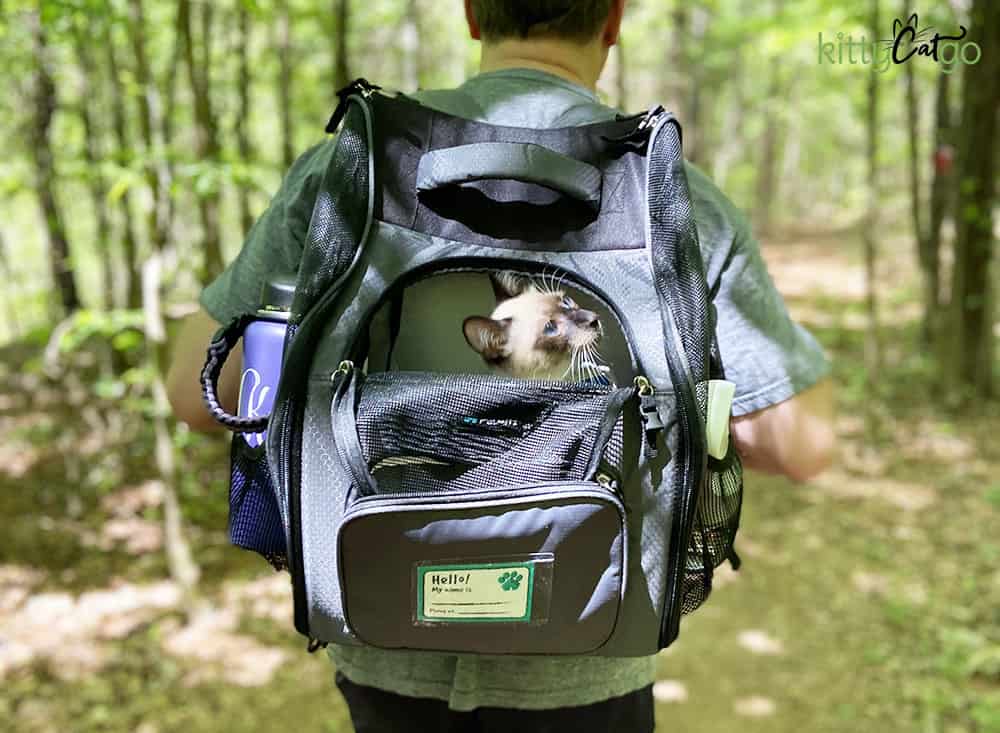
How to Train Your Cat to Ride in a Backpack
Below is a step-by-step guide to walk you through how to train your cat to ride in a backpack carrier. The process uses positive reinforcement clicker training methods, so you’ll want to get a clicker and target stick before you begin.
Each training step should be repeated multiple times over multiple training sessions. Once your cat is comfortable with each step and reliably performs the desired behavior, you can move on to the next step in the process.
1. Once you’ve found the right backpack, leave it open and out around your house for your cat to investigate. Cats are generally pretty curious, so your kitty might sniff it out and even jump inside. The goal is for your cat to grow comfortable with the backpack on their own.
2. Throw treats, toys, and/or catnip inside the backpack to help attract your cat to it. You can also try putting one of your cat’s blankets or an article of your clothing inside so the backpack starts to take on familiar scents. Feeding your cat inside their backpack is helpful as well (you might need to lay it on its side to do this).
3. Use positive reinforcement. Just like with any sort of training, positive reinforcement is key. You want your cat to associate the backpack with good things. Reward your cat with treats and praise whenever you see them investigating the backpack or getting inside.
4. Wear the backpack around the house. If your cat sees you walking around the house with the backpack on, it might pique their interest. It will also help get them more comfortable with the backpack’s presence.
5. Once your cat seems to be comfortable with the backpack, use a target stick or finger target to lure your cat inside. You don’t want to close up the backpack quite yet. For this step, the goal is simply for your cat to willingly get into their backpack on cue.
(This step requires your cat to be target trained. If you need help with this, I recommend watching this YouTube tutorial: Target Stick Training For Cats by Cat School.)
6. Cue your cat to enter their backpack, close/zip the bag for a couple seconds, open the bag, click and reward. The goal of this step is for your cat to learn that staying in the backpack is good.
7. Gradually increase the amount of time you keep the backpack zipped/closed. Click and reward always.
8. Close the backpack with your cat inside, pick up the backpack for a couple seconds, then set it back down. Open the bag, click, and reward.
9. Gradually increase the distance you pick up the backpack as well as the amount of time your cat remains in the bag. Work up to putting the bag on your back and walking around. When you click and reward, always give the treats inside the backpack to further encourage your cat to stay inside.
10. Work your way up to venturing outside your home. Start by just taking a couple steps outside and then returning in. Gradually increase the distance and amount of time you walk outside with your cat in their backpack. Start in your backyard, then maybe a walk down your street, etc. Be sure to reward your cat with treats and praise along the way! Positive reinforcement is ALWAYS important.
Practical Backpack Tips for When You’re Out and About
No matter how well your cat is trained before going out for your first hike or outing, you will likely encounter situations that throw them off their game. I’ve learned a lesson or two from my mistakes, and I hope my practical wisdom will be helpful for you on your backpack training journey!
- If your cat gets nervous or restless while riding in their backpack, have a spouse/significant other/friend walk behind you. Being able to see the friendly face of someone they know can help calm your cat down.
- If you are adventuring by yourself, you can wear the backpack on your front if your cat gets nervous. That way you and your cat can both keep an eye on each other, and you can pet and reassure your kitty if needed.
- Don’t use the backpack’s leash tether if you have the backpack top unzipped. Though it may seem like a great feature to use to keep your cat from jumping out of their backpack, it can actually be a safety hazard. Imagine walking down a hiking trail with your cat on your back. They decide they want to jump out to explore, but they are tethered in, so they end up hanging by their harness/neck from the backpack. An accident like that could easily lead your cat slipping out of their harness and running off, or even a serious injury. Use your cat’s regular leash instead of the built-in tether.
Best Cat Backpack Carrier Recommendations
The PetAmi Deluxe
Perfect for: The Everyday Adventurer
This backpack is versatile and suitable for all sorts of adventures, whether is be light hiking, canoeing, visiting the pet store, or just walking around your neighborhood.
We have used this backpack and love it. It has a sturdy bottom, a couple of pockets for storage, a flap for your cat to poke his head out, and it is well-ventilated.
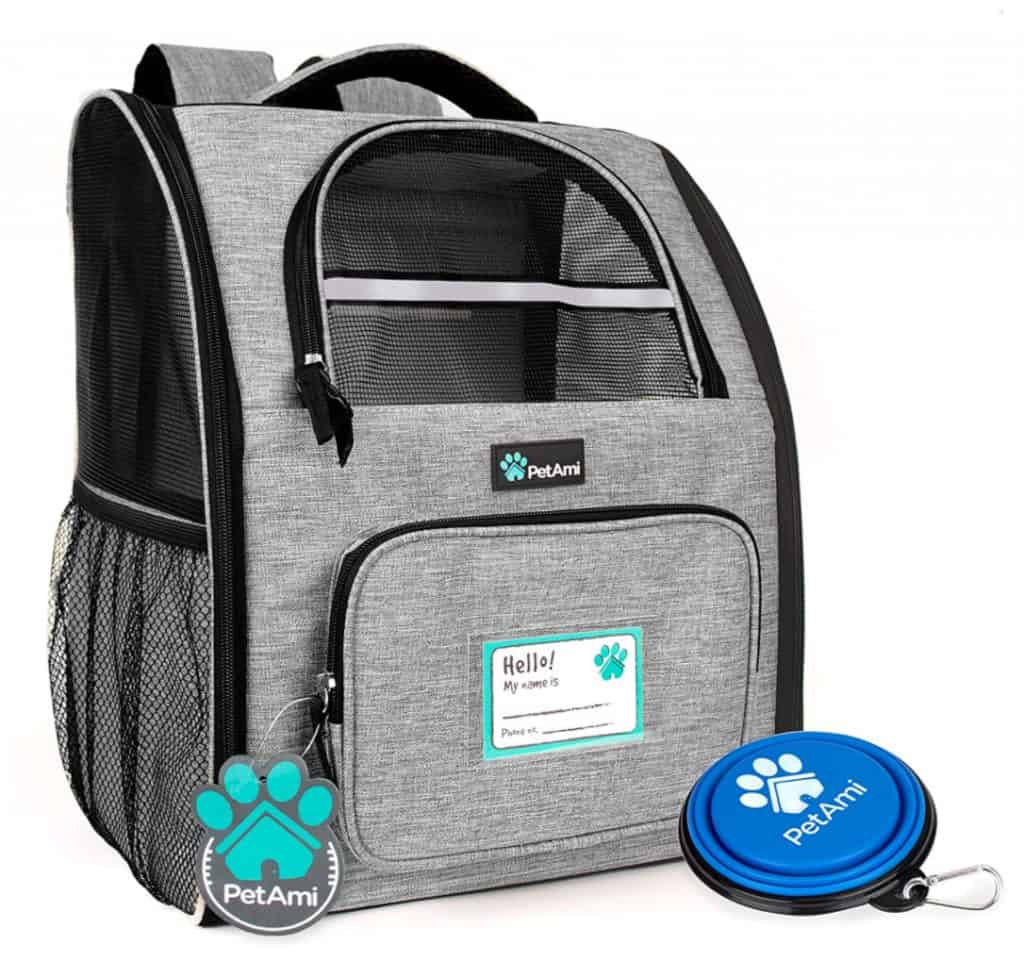
>> Click here to shop the PetAmi Deluxe <<
The Kurgo G-Train Backpack Carrier
Perfect for: The Serious Outdoorsman
If you are the kind of adventure duo that goes on long hikes or backpacking excursions, this backpack is for you! While this backpack may not be quite as spacious as the PetAmi Deluxe, it has a lot more pockets and storage for your personal items and various other gear you may need on your adventures.
The Kurgo G-Train wears more like a regular backpack and is durable and comfortable for both kitty AND human (hands-down the most comfortable backpack we’ve tried)!
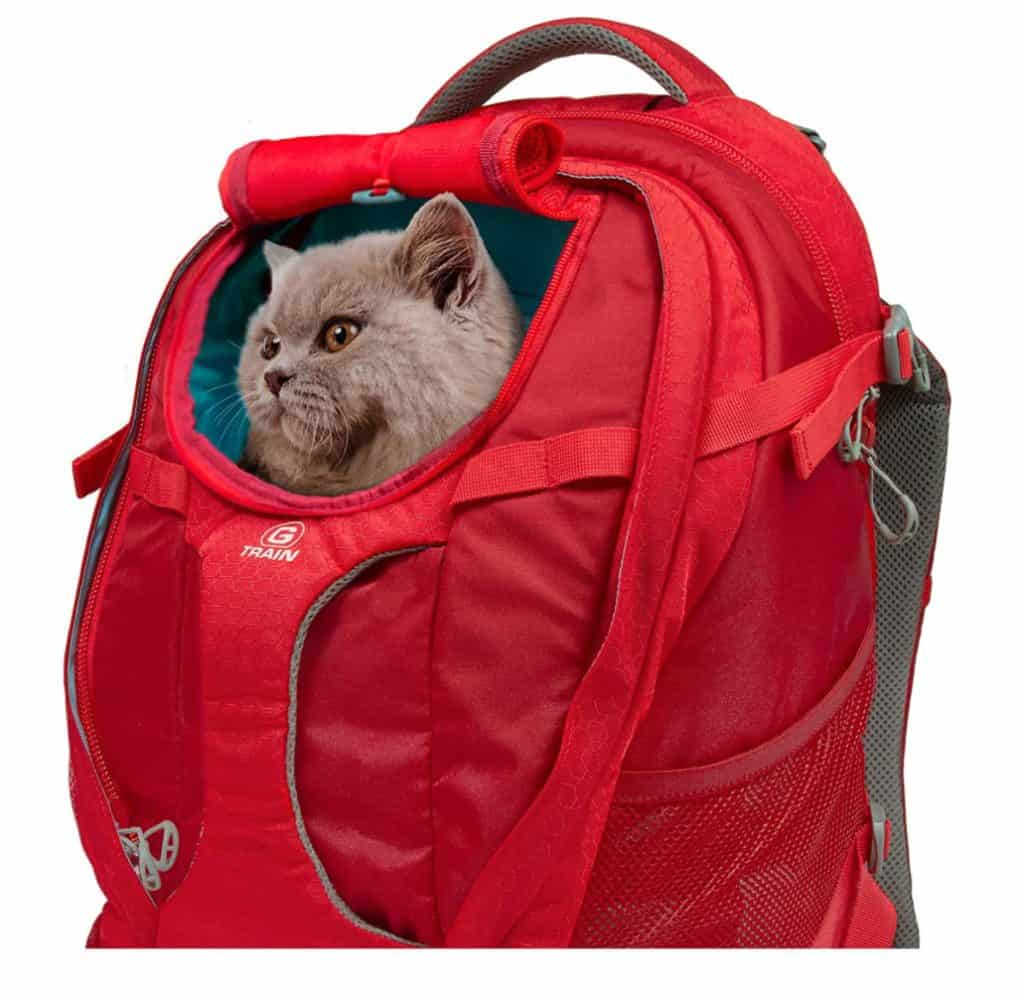
>> Click here to shop the Kurgo G-Train K9 Backpack <<
The Petsfit Hiking Pet Carrier Backpack
Perfect for: The Shoulder-Riding Cat
Many kitty adventurers enjoy riding on their human’s shoulders while out and about. If your cat enjoys a good shoulder ride, then this cat backpack is for you. It is sturdy enough to support the weight of your cat riding on top of it. It also has plenty of ventilation for when your cat is ready for a more restful ride inside the backpack.
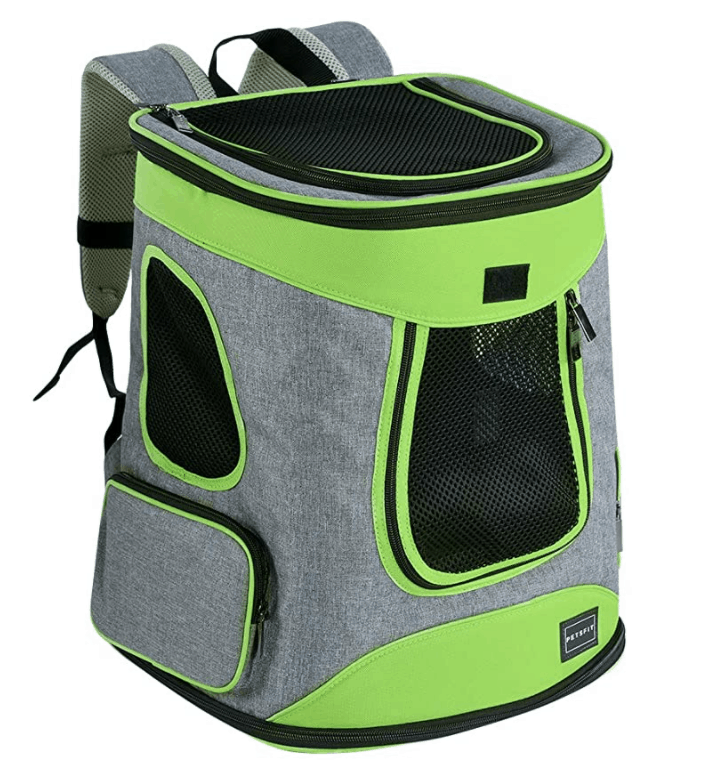
>> Click here to shop the Petsfit Backpack <<
The ibiyaya Double Compartment Pet Travel Backpack
Perfect for: The Two-Cat Adventuring Family and/or Larger Cats
Juggling two cats while adventuring can sometimes be tricky, especially if you are a one-person catventure team. While most cat backpacks won’t fit two cats, this one will! The middle divider can also be removed to make an extra-large space in side, which is great if you have a bigger cat.
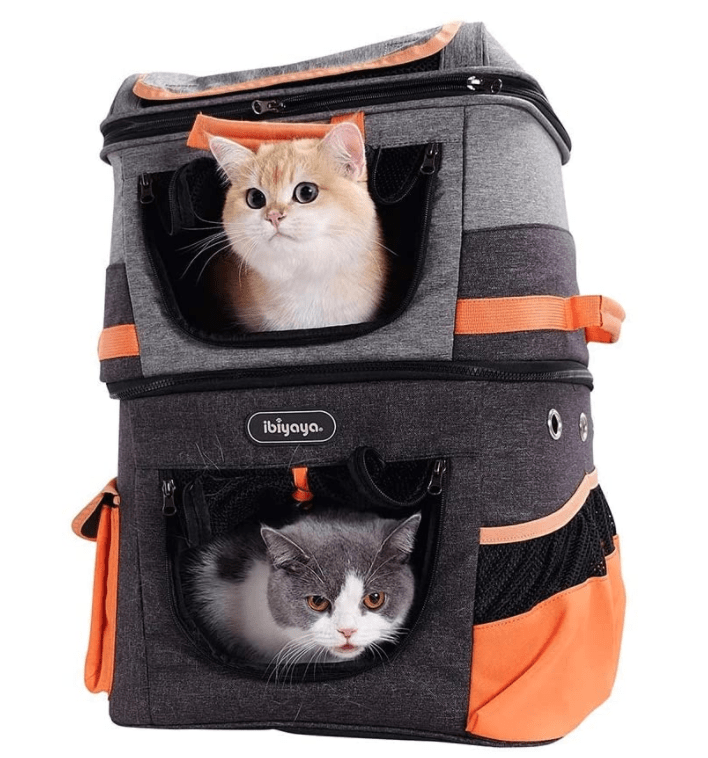
>> Click here to shop the ibiyaya Double Compartment Backpack <<
The Pet Gear I-GO2 Roller Backpack
Perfect for: The Larger Felines / Humans with Back Trouble
If your cat is on the larger size, you may need a backpack like this one. It comes highly recommended in our Facebook Group because it is so roomy. It also has wheels, which is great for those who have back trouble or don’t like to wear packs on their back.
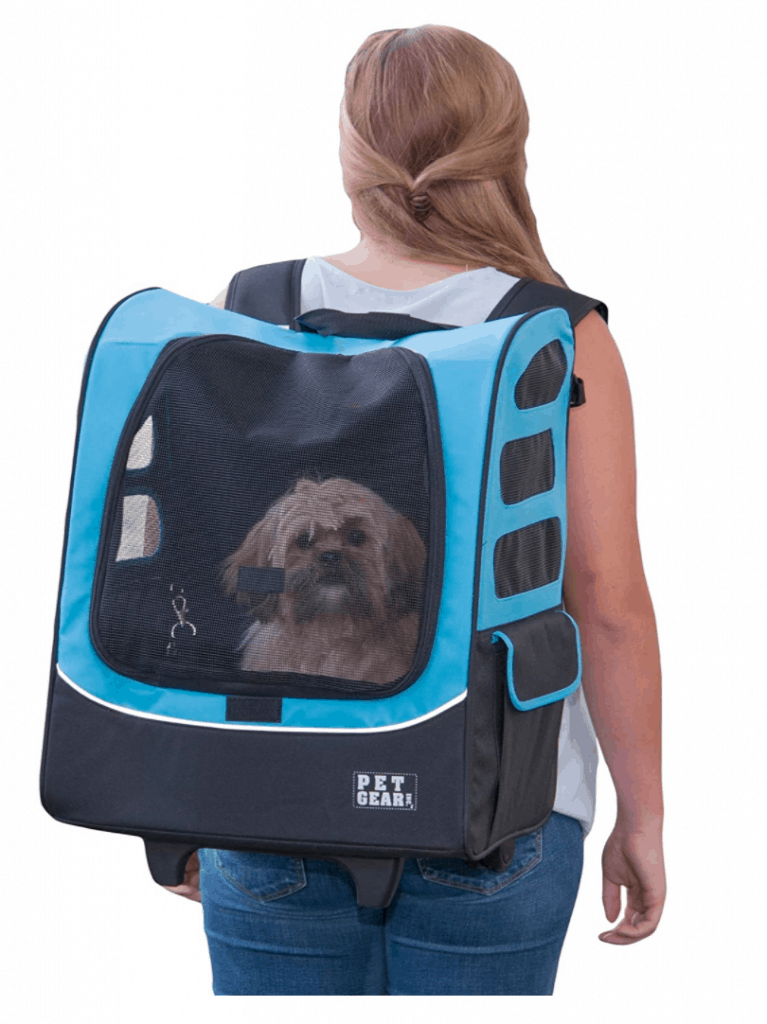
>> Click here to shop the Pet Gear I-GO2 Roller Backpack <<


About the Author
Emily Hall, ABCCT is a certified cat trainer and cat adventure enthusiast. As a “mom” to five cats and one dog, she has been writing in the pet industry for over 10 years, with a focus on traveling and adventuring with cats.
Emily has a passion for getting out there and doing more with her cats – for pushing the bounds of cat expectations! She and her husband enjoy hiking, road-tripping, camping, and canoeing with their three cat adventurers. Read more about Emily here.

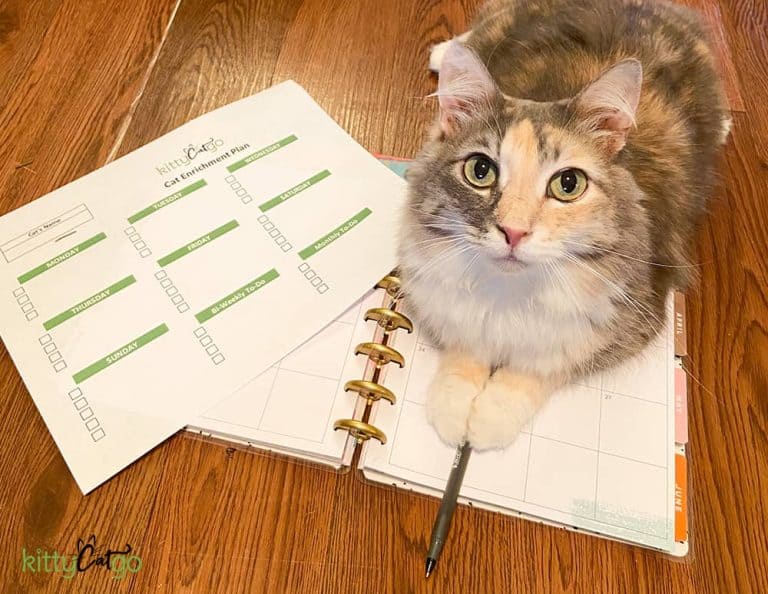
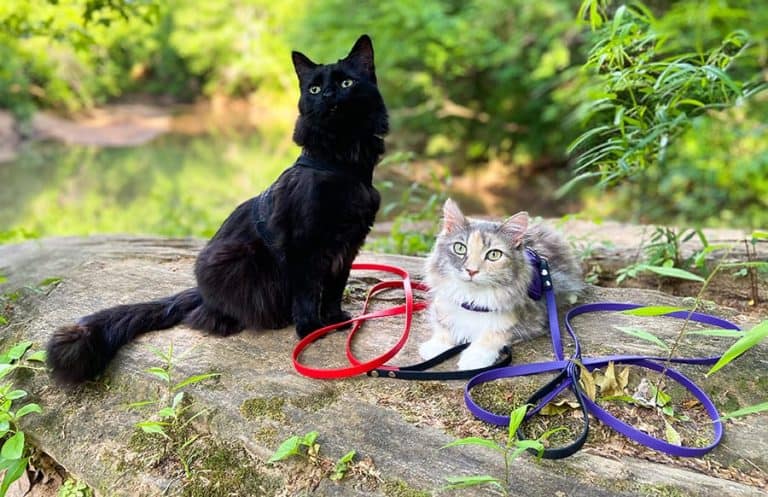
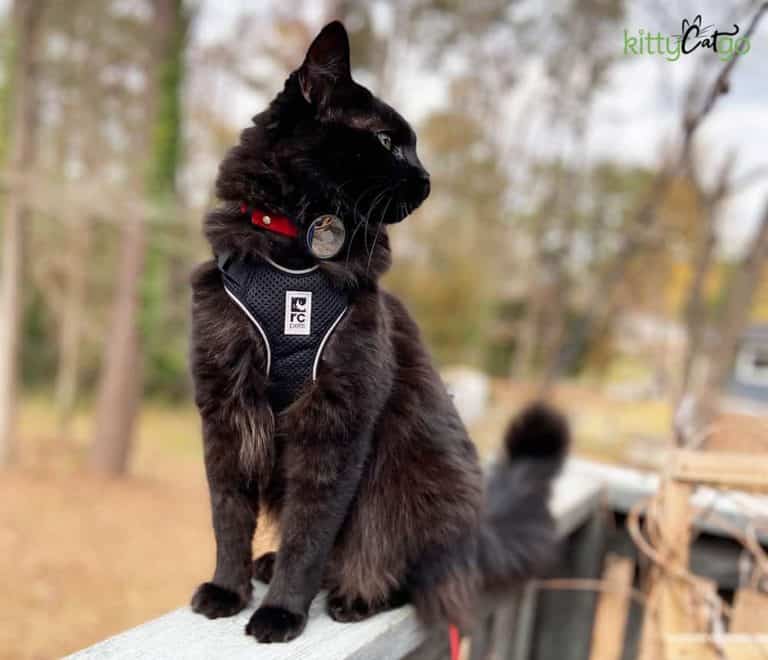
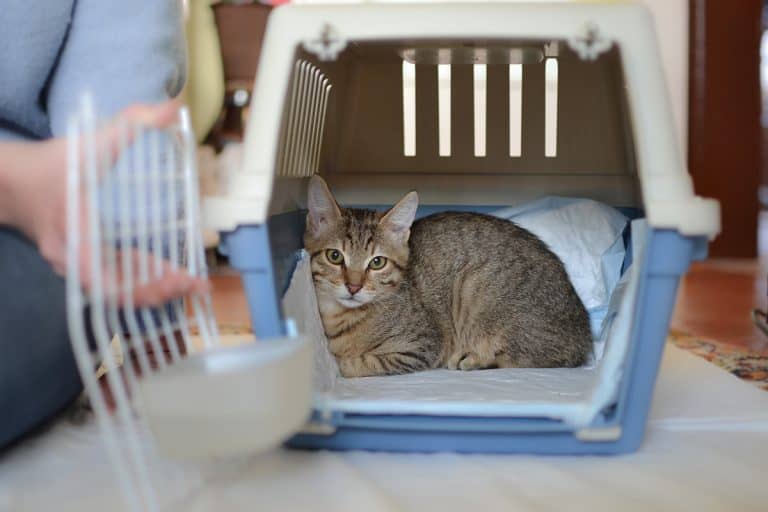
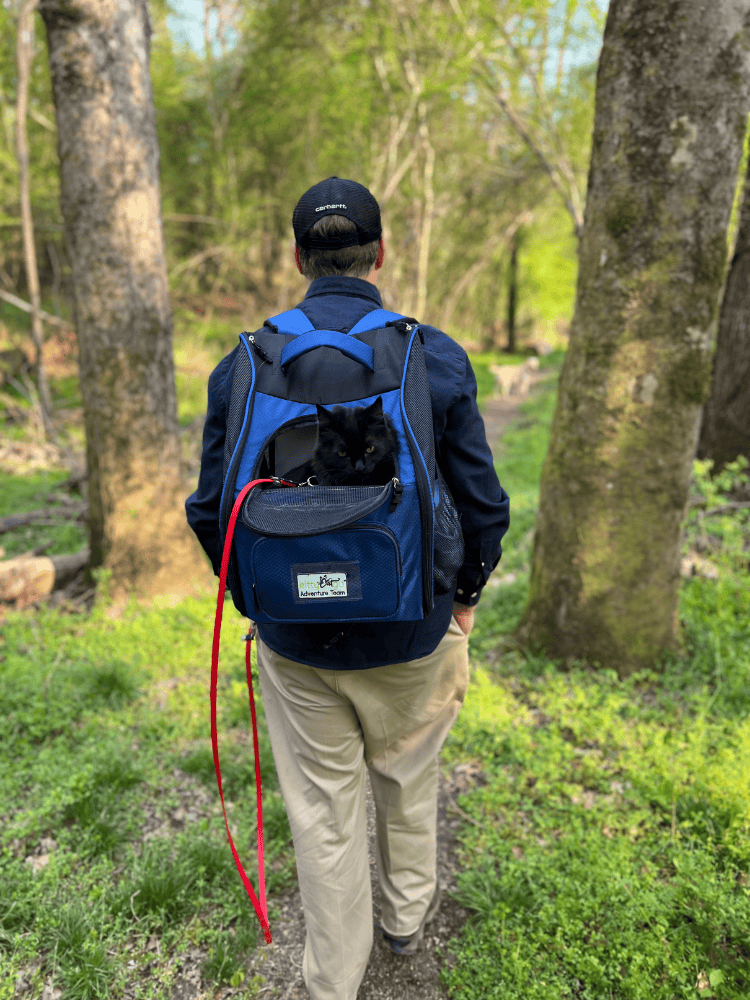
Dear Emily, my cat and I have been enjoying going on walks around our woods. I also have a good comfi harness and leash, so he can explore the surroundings a bit when we’re outside. But of course his hunter instincts kick in and sometimes he would just love to jump into the bushes or climb up a tree.
I’m so scared that he won’t ever return to me if I let him go or if he managed to escape.
Do you have any experience with that and advice? Would my cat come back to me (soon)?
Thank you very much
Kind Regards
Dasha
Hi Dasha,
I don’t have experience with this personally, as I keep my cats on a pretty close leash so I have control over where they’re allowed to go. I don’t let my cats go somewhere where I can’t reach them. That would be my suggestion to you – to not let your cats off leash or up high enough in a tree that you wouldn’t be able to retrieve. I’d also recommend working on his recall training so that way if he does get away from you, the chances of him returning to you are much higher.
Hope that helps!
Emily